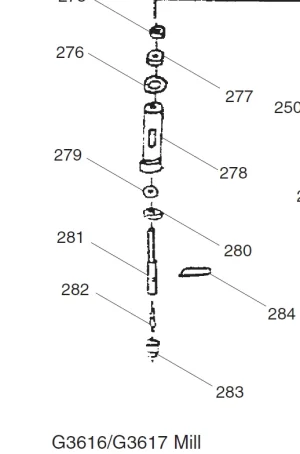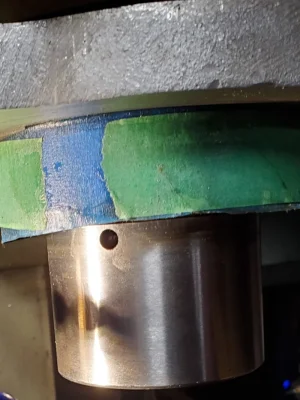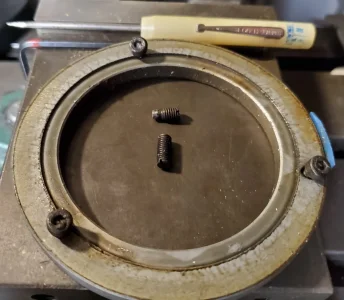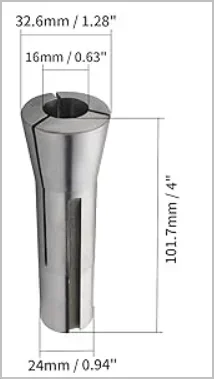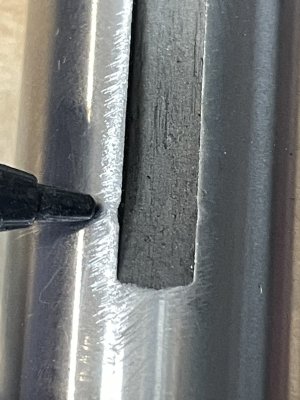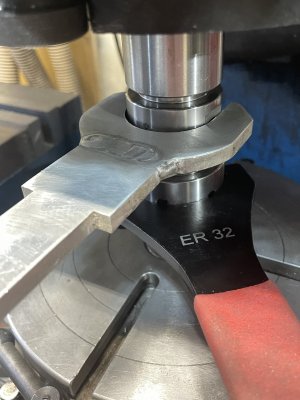I have, to my shame, put excessive torque on a drawbar. I lengthened it. After loosening it, I could still tap the collet out (more or less) normally. Nothing otherwise bad happened.I suppose it's worth considering the excessive torque scenario too......
If with very gentle taps it doesn't pop out and fall onto you table, then the setscrew still has threads on it. Now you have a problem to solve.Assuming only the larger thread portion of the setscrew actually threads into the spindle, I could try gentle tapping the smallest portion in further so it falls out the bottom, or try to make a tool to reach up through the bottom to push it back from the inside back in the direction it was threaded in from, though that seems near impossible?
Check by eye (bore scope, mirror, or by direct looking if you are more flexible than I am) and see if the pin intrudes into the bore. You can of course feel it with a collet -- If it doesn't intrude into the spindle, you will have to fabricate a way to turn it - either into the spindle or all the way out. As I recall, the spindle wall is just under an inch of thread at that point. So it is easier to wind it into the spindle than back it out -- unless there is swarf kin the threads. Junk somehow gets into the threads. I don't know how!!! Then you might have to make a drill guide out of a set screw to drill it through the centre , and then progressively larger drills to drill out the piece (very carefully)...
If the 'bad thing' happens you can always go larger, and make your own dog point setscrew. Not standard, but it would work just fine and not hurt the mill. IF you go that way -- you have to relieve the hole on the inside of the spindle - it is really important so you don mess up the collet as it goes in...

